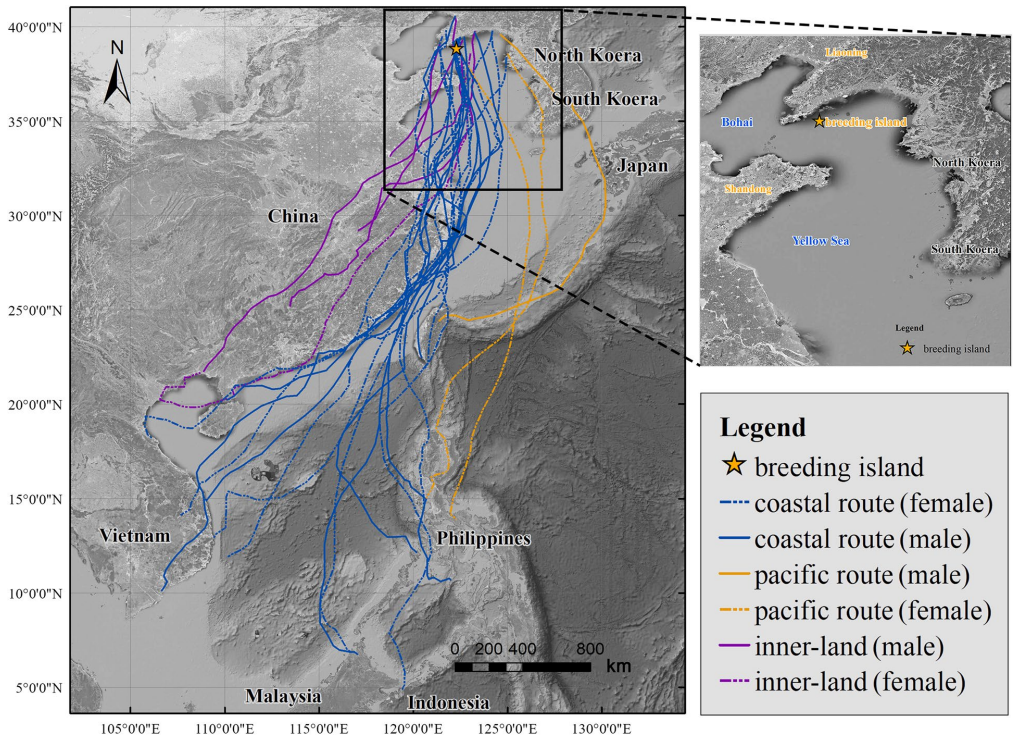Huang Z.J., Zhou X.P., Fang W.Z., Zhang H.L. and Chen X.L.. 2021. Avian Research, 12(1):65.
Background The vulnerable Chinese Egret (Egretta eulophotes) is a long-distance migratory waterbird whose migration and wintering information is poorly understood. This study aims to identify the autumn migration routes and wintering areas of juvenile Chinese Egrets and determine the migration movement traits of this species. Methods Thirty-nine juvenile Chinese Egrets from the Fantuozi Island, an uninhabited offshore island with a large breeding colony of Chinese Egrets in Dalian, China, were tracked using GPS/GSM transmitters. Some feathers from each tracked juvenile were collected for molecular identification of sex in the laboratory. The GPS locations, recorded at 2-h intervals from August 2018 to May 2020, were used for the analyses. Results Of the 39 tracked juveniles, 30 individuals began their migration between September and November, and 13 successfully completed their autumn migration between October and November. The juveniles migrated southward via three migration routes, coastal, oceanic and inland, mainly during the night. The migration duration, migration distance, flight speed, and stopover duration of the 13 juvenile egrets that completed migration averaged 5.08±1.04 days, 3928.18±414.27 km, 57.27±5.73 km/h, and 23.08±19.28 h, respectively. These juveniles wintered in the coastal wetlands of Southeast Asia including those in the Philippines, Vietnam, and Malaysia, and only one successfully began its spring migration in June 2020. Conclusions This study newly finds that the oceanic route taken by juvenile Chinese Egrets, suggesting that the juveniles are able to fly over the Pacific Ocean without a stopover. Moreover, our novel data indicate that coastal wetlands along the East Asian-Australasian Flyway are important areas for both autumn migration stopover and the wintering of these juveniles, suggesting that international cooperation is important to conserve the vulnerable Chinese Egret and the wetland habitats on which it depends.

Figure 1. Migration routes and wintering areas of juvenile Chinese Egrets. Each line represents one individual. Red, blue, and orange lines represent inland, coastal, and oceanic routes, respectively. The dash line represents the route taken by females, and the solid line represents the route taken by males.

